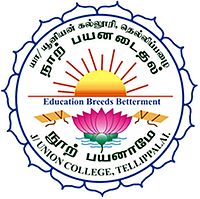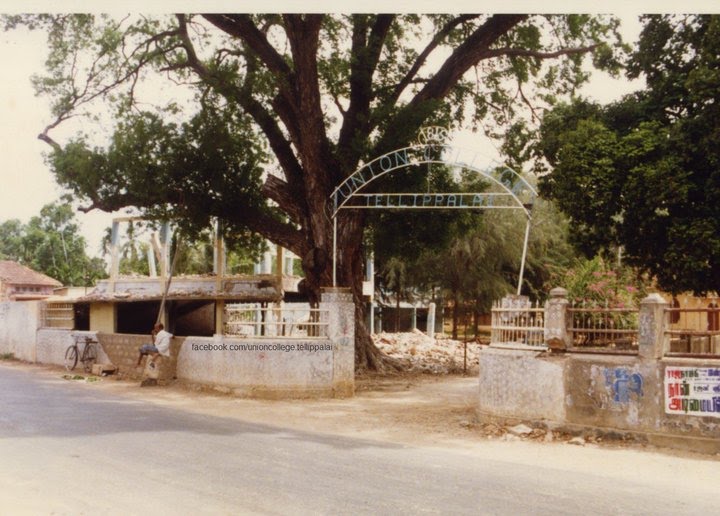by Mandalam’s Note, source & date unknown
It should be recalled that amongst the many Colebrooke Commission changes, English was made the Official Language of the country in 1833.
For reasons that have not been researched, large sections of the Tamils ended up in the barren North with poor rainfall once a year during the NW monsoon. Paddy cultivation was possible only in the limited low lying clay lands where good harvests were a rare phenomenon. People in the North therefore engaged in subsistence farming, and market gardening where underground water could be tapped using well sweeps. Many depended on daily wage earnings from manual labor for their livelihood. Formal education thus provided the rare opportunity for improving their earning capacity.
It not very clear why the American, Methodist and other Christian Missions all rushed to the North and started setting up churches and English schools in the Jaffna Peninsula, as early as in 1816 (See list below).
This was some 17 years prior to 1833, when English was made Island’s the language of Administration, some 20 years before the British Government decided to establish its first English School (The Royal College in Colombo), and almost 50 years before any Christian Mission could establish an English school outside the North.
It is to be expected that English speaking Administrators wanted to employ only persons who could understand their instructions, and communicate with them. Ability to speak read and write English were therefore obvious criteria.
By 1833, most probably hundreds of Tamils form the North were the first lot of applicants the British found to be competent to be employed, even as their Office Peons, Post Peons, Fiscal Peons, Railway Guards and Policemen.
And by 1851, when St Thomas College – the first Christian Mission school – was established in the South, there would have been thousands of English educated Tamils who were fit for all manner of ‘White Collar’ jobs – clerical servants manning Government Offices, Rail Stations, Post Offices, Courts etc.
 So much so, the British started taking hundreds of English educated Tamils to Malaya to work in the railways and rubber plantations, white the Indian labor were brought out for Ceylon’s coffee/tea and Malaya’s rubber plantations.
So much so, the British started taking hundreds of English educated Tamils to Malaya to work in the railways and rubber plantations, white the Indian labor were brought out for Ceylon’s coffee/tea and Malaya’s rubber plantations.
By 1931, when the all-Sinhala or ‘Pan Sinhala’ Board of Ministers took control, the “British favoring the Tamils, under their ‘Divide and Rule’ policy” accusations had surfaced.
By then, thousands and thousands of Tamils from the North had thrived in English education- completing their Cambridge and London University courses, securing high number of places in the Administrative and professional examinations. In fact a Tamil from the North was one of the successful candidates in the first ever Indian Civil Service examination.
No wonder then that higher proportion of successes of Tamils were noted in the Ceylon Civil Service and professional examinations, and all the Tamils in the Colombo streets were seen in shirts and pants.
Accusing the Tamils of having ‘enjoyed unduly high proportion of ‘Privileges’ under the Colonial rulers’ who had discriminated against the majority ethnic group in favor of the minority” will therefore not wash.
It will be apparent from the College list below that by 1920 there were some 15 reputed English colleges in the Jaffna Peninsula itself – more than double the number in the entire South.
Between 1931 and Independence, the ‘Pan Sinhala’ Board of Ministers could do very little to stem the English education growth inertia in the North, despite the deliberate neglect of the Tamil Homeland, and calculated measures such as the “Free Education’ scheme that made it difficult for most Mission schools to function effectively.
It should be no wonder then to find, at Independence in 1948, Colombo was filled with Tamil Government Officials, Accountants, Engineers, Doctors, Apothecaries, Lawyers, etc in more than proportion to their numbers.
This was not because of ` ‘British giving preferential treatment to Tamils’ or “the result of the British using the “minority Tamils, by favoring them in state employment” ending in “disproportionately represented in ‘government service.”
———————————
 Union College Tellipalai
Union College Tellipalai
by http://en.wikipedia.org/wiki/Union_College,_Tellippalai,_Tamil_Eelam , accessed October 2017
History
The First English School of Jaffna, which led to Union College, was founded in Dutch Hall in 1816 by the Rev. Daniel Poor, an American citizen. At that time, the bitter consequences of the War of 1812 had soured the feelings of the governor of the British colony of Ceylon, Robert Brownrigg, against all Americans. In 1813 he refused permission for the first batch of American-Ceylon Missionaries of New England[citation needed] to settle in Colombo.

Union College, Tellippalai. Photo 2010 by Thiru Jeyan
They were sent to the arid Jaffna peninsula, permitted to occupy only Dutch buildings, and refused permission to proselytize in Jaffna or Point Pedro. Brownrigg also refused them a charter to provide higher education. The Rev. Samuel Newell arrived on September 7, 1813 on the Jaffna peninsula and occupied the Tellippilai Union premises, which at that time consisted of dilapidated and snake-infested structures dating back to the Portuguese of the 16th century. [1]
Timeline: the First English School in Jaffna Were established by the American Mission, Church Missionary Society of London and Methodist missionaries from Britain
1816 Dec. 9 – ‘Common Free School’ founded on Dutch Church premises by Rev. Daniel Poor of the American Mission. He was the first head of school from 1816 – 1823 of this, the first pioneer English School founded in Jaffna. Bilingual education in English and Tamil. Assisted by Edward Warren and Mrs. Susan Poor (in charge of girls in the Hostel)
1818 July 20 – Common Free School was converted into ‘Family Boarding School’, starting with 6 students including 5 girls. Minorities were accepted, including Miranda Sellathurai.”
———-
English Education Schools in Ceylon
Royal College Colombo – 1835
Union College Tellipalai – 1816
St. John’s College Jaffna – 1823
Jaffna Central College – 1816
Hartley College Point Pedro – 1838
St. Patrick’s College – 1850
Kopay Christian College – 1852
St Henry’s College Ilavalai 1877-1907
Jaffna Hindu College – 1896
Urumpirai Hindu College -1911
St Thomas College Mt Lavinia – 1851
Trinity College, Kandy – 1872
St Josephs College – 1896
St Peters College – 1919
Ananda (Buddhist) College Colombo – 1886
Zahira (Muslim College) College Colombo – 1892